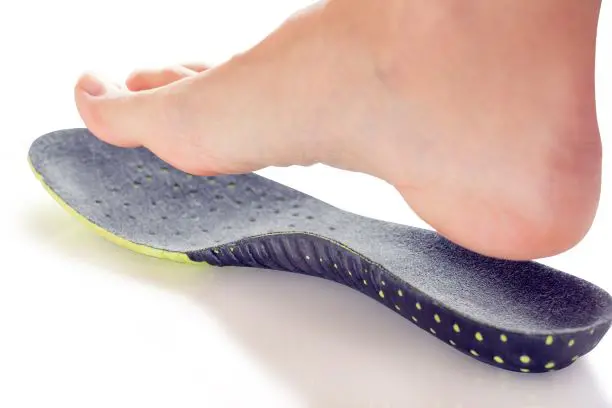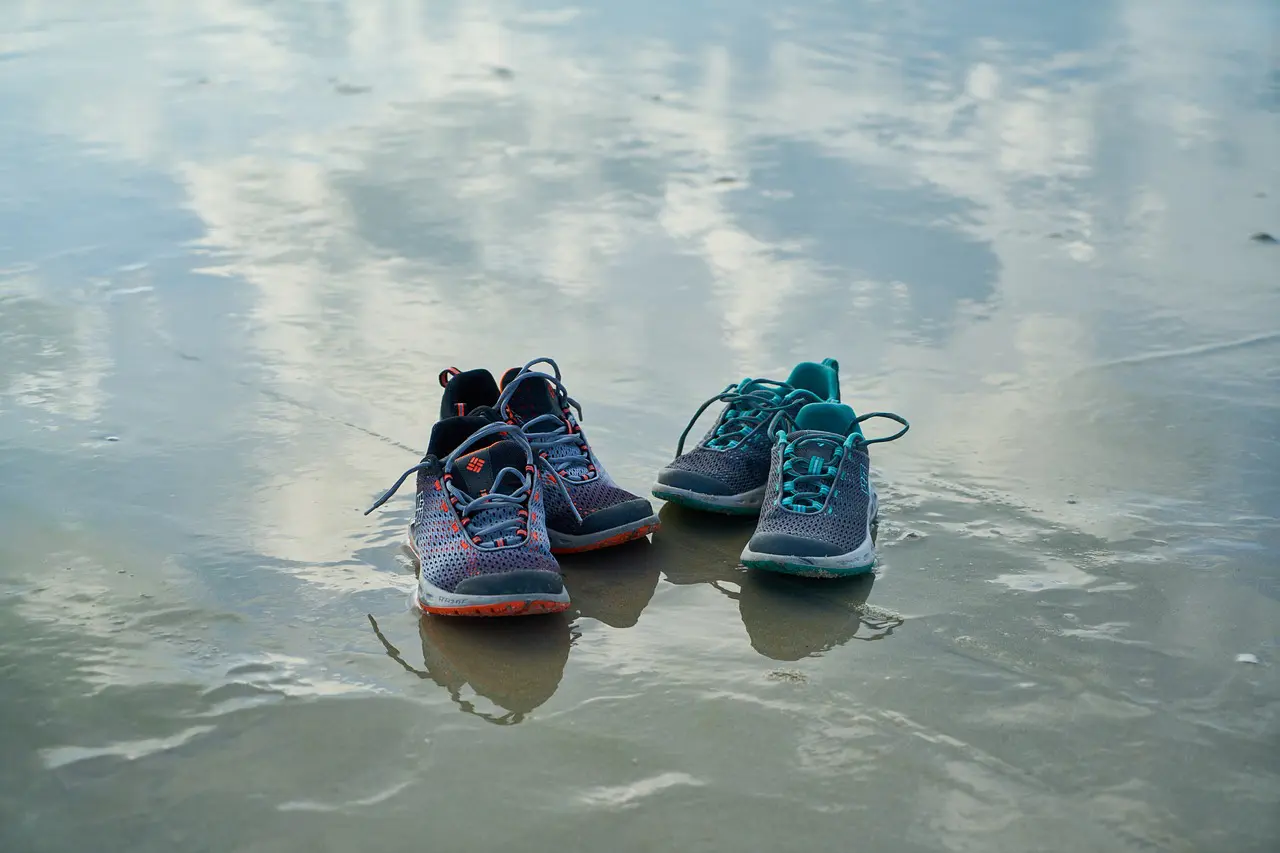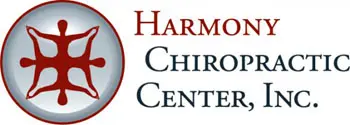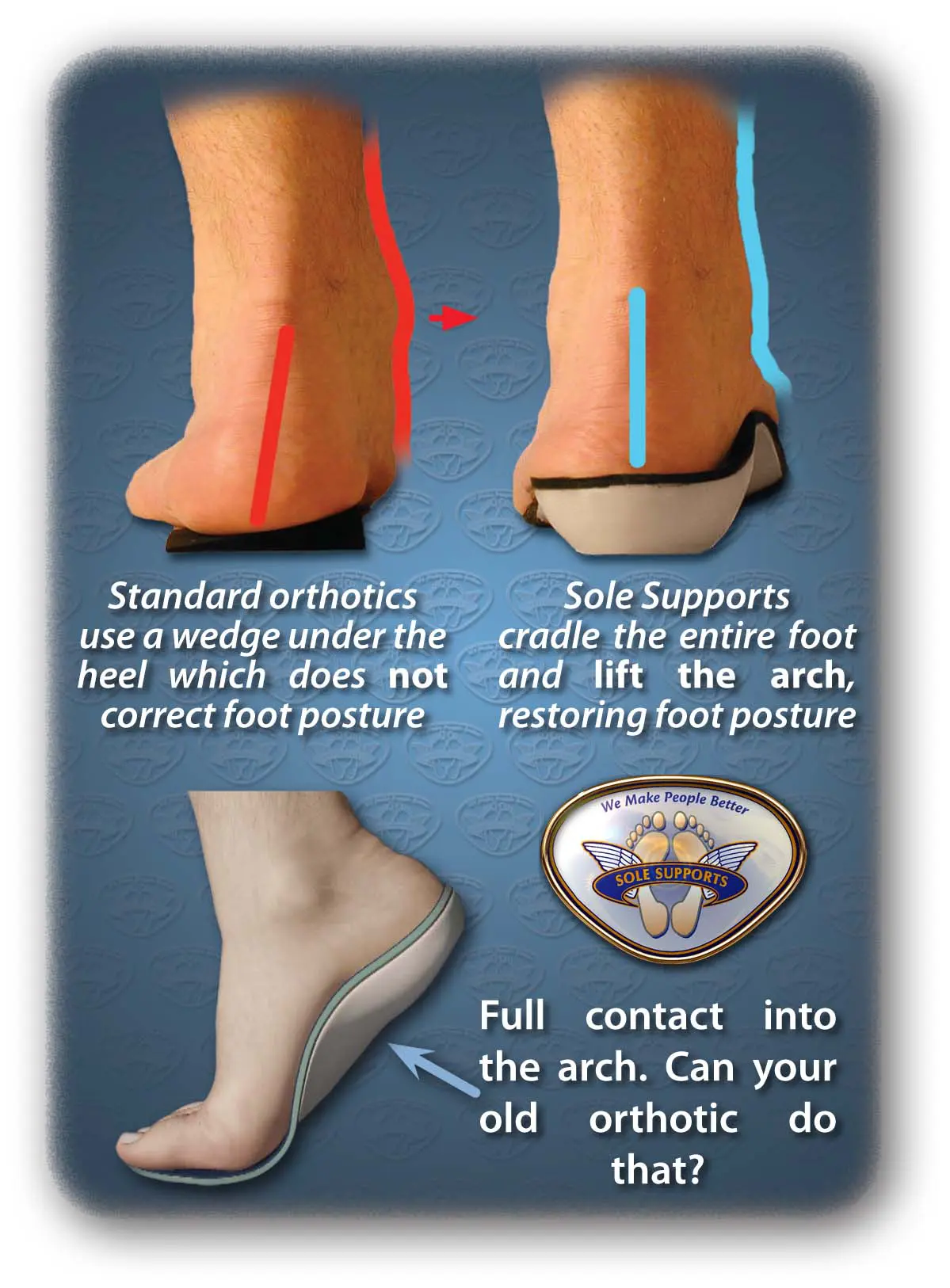What do Orthotics do?
Gait is extremely complicated with 28 bones and 33 joints in the foot and ankle being pulled on by over 100 muscles, tendons and ligaments. Orthotics are devices that can help runners feet move better biomechanically. The foot and ankle are extremely important as they act like the foundation of a house. Problems in the foundation of the house can have an impact on the integrity of the roof. Having trouble with the way the foot contacts the ground will have an impact on the muscles and joints in the knee, hip, low back on the same side and even the opposite side shoulder. When it comes to gait, running is a bigger problem than walking because it happens more quickly, and therefore problems end up becoming magnified.
Orthotics change the way that a foot contacts the ground while running. The foot needs to be stable and strong when landing and when pushing off in order to efficiently transfer energy. The foot also needs to have a degree of flexibility to allow the foot to adapt and prevent injuries because we did not evolve to run on concrete wearing shoes. There needs to be a balance between stability and flexibility in the foot and often, there is a lack of stability in the foot. This is known as a functional flatfoot, which is a flexible foot whose arch will collapse easily.
Do Custom Orthotics Work?
Research shows that orthotics can effectively reduce the excess motion in the foot and ankle in those that have flatter feet. Over 75% of runners in a study reported complete resolution or great improvement in their symptoms when using orthotics. Over 90% of the runners in the survey had a high degree of overall satisfaction, because they continue to use the orthotics even after the resolution of their symptoms. One reason that runners appear to like orthotics is that it may allow them to continue to run without having a healthcare provider tell them that they need to stop.

Custom Orthotics vs. Off the Shelf
Orthotics are available in the drug stores and obviously within running stores but there are also custom orthotics available from a healthcare provider like a chiropractor, podiatrist or physical therapist. Custom foot orthotics are considered the gold standard, but they do often come with a considerable expense. Some insurance companies still pay for these, but they can run $300 to $650 per pair if they are not covered. Some of these custom-made orthotics are extremely poorly made despite being so expensive.
Trying a less expensive option first is often a good idea. The problem with the prefabricated orthotics is that there is a wide range of options and many of them are not well made. That is why I encourage runners to go to a running store to get a product like Power Steps or something similar. Pre-made orthotics from the grocery store or drug store are not going to be made well in general.
Remember that an orthotic should modify the gait of the wearer, which means that it needs to cope with bodyweight. If you can easily bend the orthotic, then it is most likely a waste of time. There should be some give when applying pressure to the part that goes under the arch, but it should not collapse. Some custom orthotics that are made of metal (graphite) and have no give at all and many patients complain that they are not comfortable to wear. There needs to be a balance for between arch support and allowing the foot to move and it depends on the individual’s foot.
One reason to get custom orthotics is due to the comfort that they may afford the runner. Custom orthotics are also able to be customized to a person’s activity level and body weight. Runners and people who stand for more than eight hours a day typically require more strength and rigidity in an orthotic. Bodyweight also plays a role because people that weigh more require more rigidity in the orthotic.
Who Needs Orthotics?
Orthotics can be used for a number of different issues that a runner might be experiencing. Some conditions that may improve with custom orthotics include plantar fasciitis, Achilles tendinitis, big toe arthritis, IT band syndrome, shin splints, problems in the knee hip or back, Morton’s neuroma, poor posture, flattening feet and severe pronation.

The classic type of person who needs orthotics is someone who has a flexible foot with an extremely low are almost nonexistent arch in their feet when standing. There are multiple different variations on how feet present. People that have extremely large arches present when they are not weight-bearing may completely collapse when they go to standing. A person that has a high arch that is very rigid is often not a candidate for orthotics
Runners who have had a foot or ankle condition for a prolonged period of time probably need to get orthotics in order to help assist them out of the situation. People that struggle with obesity also have the tendency to respond well to orthotics when they have had a foot or ankle issue.
What are other options besides orthotics?
There are plenty of options for treatment for many of these issues besides orthotics. Anti-inflammatory pills and cortisone injections are extremely common to be used for people with problems in the lower extremities. In some cases, heel pads or gel insoles can be helpful and people use multiple different types of pads or cushions to get relief. In my office, I use Kinesio Taping and Graston Technique on many of these patients in order to help them get relief.
The best option of them all is to be trained in exercises in order to improve the strength and stability in your foot. We spend an inordinate amount of time with our feet encased, protected and padded. Many people wear shoes through the house at all times and could never be caught barefoot in the grass. This creates extremely weak feet and the weakness of the feet leads to a lack of stability. The lack of stability can lead to an increase in improper movement within the foot and ankle as well as up the leg to affect the knee, hip and low back. There are exercises that can be done in order to improve the strength and stability of the feet.
This is not to say that exercises are the only answer for runners who is suffering from a problem in the leg. There is something to be gained in many cases by having a person utilize orthotics temporarily to help put the fire out while they are attempting to strengthen their feet
These exercises are not the typical things that I have seen given in podiatrist and physical therapy offices. It doesn’t make any sense to try to grip the ground with your toes as the flexor musculature of the foot in most people is already active enough. People need to do a specific exercise to strengthen the foot and arch itself and work on the strength of the extensor musculature on the top of the foot in the front of the shin.
Article Featured in Toledo Roadrunners Club Footprints – Volume 45, Issue 10 (October 2019)

